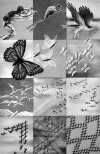
You're always a one-man star. To build something bigger, you gotta do RW.
Sequential Relative Work exists only because it is possible within the freefall environment. It is not the preconceived idea of any one group or individual. It is a natural step in the evolution of relative work. Sequential relative work is bounded only by the physical realities of freefall and our own skills and imagination. The sequence is the means. The joy of sequential is the flying necessary to accomplish it. Relative Work is a human possibility. A potential. Sequential is the pattern of the resulting flow.
Matt Farmer
Sequential Relative Work: Tempting Our Imaginations
The Concept. During the past few years, the art of relative work has been progressing at an amazing geometrical rate. All around the world on small drop zones, as well as on large ones, relative work has been rapidly expanding, limited only by the imagination of those involved. Everywhere jumpers have discovered that we, personally, have the ultimate control over all of our actions in freefall, even if some of these are not our intended actions.
Since a large majority of skydivers have become involved in this free-style form of relative work, it is inevitable that there has been a growing desire for a refreshing new concept in skydiving competition to test the freefall skills involved.
For November, 1976 the Third World Cup of Relative Work has evolved as a means to encourage international skydiving meetings here exchanges of new ideas will be highly persistent and most of all encourage progression within our sport. Due to the jump aircraft readily available in most countries around the world, the size of teams was established to include 4-Man teams. This will enable most of the teams to have as equal a chance as possible to practice for this competition.
In the past, all forms of parachuting and skydiving competitions have maintained the physical test as a constant, and scoring has been determined by maintaining time or distance as a variable. This has resulted in limiting the maximum performance of this test to a finite 0.00 seconds or centimeters. The events for the Third World Cup, however, have been designed so that time is a constant and scoring is determined by the number of points acquired during that allotted time.
This concept results in there being no limit for the maximum performance, as an infinite number of points are possible.
Exit requirements and restrictions have posed many problems for past relative work competitions. The split second decisions required of judges on speed events to determine exactly when the first jumpsuit has shown in the door when a no-show exit is required, has been a very difficult job at best. It has been harder to determine if that blob that piles out the door has anyone holding on to each other. These, along with the most serious drawback, that of continually battering the bodies of the skydivers, have inspired the World Cup organizers to remove all exit restrictions, as long as no-one's safety is jeopardized.
In determining the skydiving requirements for the World Cup, every effort has been made to establish a combination of events to test a multiple of relative work skills demonstrated by the skydivers. The exit and time to build the first formation is very important on each jump, and the quicker a team is able to perform this exercise, the better chance they have to score well. Once the first formation is finished, it is also of great importance to use the remaining freefall time to its fullest extent. On each jump a team will have a sequence of maneuvers to perform within the maximum working time, during which points will be scored for each correctly completed formation. All formations and intermediate requirements must be completed in the predetermined sequences as explained in the rules or scoring will stop.
The judging of the World Cup has been made as simple as possible. It is up to the judges to determine whether or not each formation has been completed correctly. It is not required that a completed formation be held for any length of time. There are no requirements governing symmetry or heading of the formations. Also, complete mirror images of the illustrated formations throughout the entire jump are acceptable. It is up to the competing team to execute the correct and complete required maneuvers in a manner that the judges will be sure that this has been achieved. A computer will be used to determine the elapsed time between judge's exit announcement and each additional call signifying each successfully completed maneuver. If a maneuver is recorded complete after the maximum working time has elapsed, no points will be scored for that completion.
The Events. The actual events, formations and sequences of maneuvers for the Third World Cup of RW have been carefully constructed in order to insure a great deal of variety from one jump to the next. The 4-Man and 8-Man events are basically identical in concept. The 4-Man has 35 seconds working time and 8-Man has 50 seconds.
The emphasis for the first four rounds is on "flying groups", or doing relative work with two or more jumpers gripped together as they fly from one formation into another. It is through the use of mandatory intermediate requirements between the specified static formations that this is accomplished. If there are no intermediate requirements indicated between formations, the team may choose any method to go from one formation to another. Also, a total break of grips is not necessary if this is the case.
Understanding exactly what is required, allowed, and not allowed during these specific intermediate maneuvers can be quite confusing. Hopefully this explanation will make everything perfectly clear. The mandatory intermediate requirements shown in the rules must be observed by the judges between the previous and following completed static formations. If this intermediate requirement shows two or more divers gripped together, then they must break from the previous formation gripped together. They must maintain this contact through the completion of the following formation. These divers gripped together may have to switch grips to form the necessary intermediate requirement, but they must not loose contact between themselves. If a team does not follow this procedure, such as a total separation occurring between two or more divers who should remain in contact with each other, scoring will stop until they rebuild the last completed formation and continue to work from there.
Once the intermediate requirement has been achieved, the divers must fly these sub-groups as they are until completion of the next formation, unless additional grip switches are necessary to complete the next formation after docking. In no case may contact be totally broken between the divers within each flying group. If this procedure is not followed, scoring will again stop until the intermediate requirement is rebuilt and the team progresses from there.
On the transitions requiring rotations of flying groups, such as turning and docking stairsteps, the turns may be in either direction on the horizontal plane.
The exact sequence of formations for rounds 5-10 will be drawn prior to the practice jumps at the meet site. The first formation for each of these rounds has been established. The random selection for the remainder of each round will be from the pools of formations established in the rules. There will be four additional formations to build after the pre-determined one in the 4-Man event and two additional ones in the 8-Man event. A total of all grips must occur before continuing on to build the next formation. All the additional formations must be performed in the order drawn from the pools, or scoring will stop. Again, it should be stressed here that it is up to the jumpers to make it evident to the judges on the ground that these maneuvers have been completed correctly.
The Dives. In the 8-Man event for rounds 1-4, two points will be scored for each correctly completed formation, and teams that complete the entire sequence correctly will score two bonus points for that jump. In rounds 5-10, three points will be scored for completing the entire sequence. In all the rounds in the 4-Man event, two points will be scored for each correctly completed formation.
In the case of a tie at first, second or third places, the tied teams will go into a Sudden Death jump-off. The competition will continue as in rounds 5-10 for one or more additional rounds. However, one additional formation per round will be added until there is a difference in the teams' scores so that the respective places can be decided. It is at this point that the advantages for the concept of limitless maximum performance can be truly appreciated.
The sequences of maneuvers for World Cup events were designed as fun dives for anyone to do at any time, as well as being a means of international competition. These dives will add a new freshness and challenge to our skydiving, but it should also be stressed that limiting our dives to include only these will quickly pop this new bubble. Mastering these dives will help establish basic skydiving skills which can serve as an important platform for infinite future skydiving possibilities.
Boom Or Bust. Will all this complexity lend itself to a reliable form of relative work competition? Time and a great deal of effort by a wide variety of people will tell. A foundation to work from has been established, and experience will test its worthiness.
As is, often the case, the quality of the skydiving at this point is at a far more advanced state than the quality of the judging. It is for this reason that the judging has been simplified as much as possible. And it is for this same reason that the skydivers have been required to make it perfectly clear to the judges that they have completed the required maneuvers, even if it is not the most efficient method to do so.
The widespread use of video tape from a multiple of angles on the drop zone, and even in freefall, will greatly improve the judging. This will, in turn, allow the divers to be judged closer to their possible maximum performance, which will also be continually improving.
If the concept of the rules for the Third World Cup of Relative Work is to be successful in future national and international competitions, it will be necessary to change and improve the sequences of maneuvers to keep up with the progression of our sport, and to continue to challenge our abilities.
BJ Worth. Canpara, August 1976, and Parachutist, July 1976
The best way to learn sequential relative work is to practice it, of course. And the practicin' is as much fun as the "doin'." Here's an idea that will help you master the mystery of sequential easily - practice "Progressive Relative Work."
Progressive Relative Work is found in all phases of the RW arena. It is that outermost creative edge of a swoop where you test your imagination. We all do it. It evolves from the conscious act of pursuing perfect flight.
Two kinds of Progressive RW give fast increases in sequential skill: 1) no-contact sequential, and 2) four-man sequential. No-contact is, simply, sequencing from one formation to another on a dive without taking actual physical hand-grips with each other. It's a fun, challenging type of flying.
The most successful sequential teams have two things in common: they do Progressive Relative Work, and they have a core which does four-man sequential RW. In many cases, that four-man core was the beginning of a larger team.
Learn four-man sequential first and you'll do better eight-man sequential quicker, cleaner, and in less time. In four-man, you fly every second. Importantly, four-man requires the same multi-dimensional levels of thinking and flow that eight-man (and larger) sequential requires.
You learn to do RW right out the door, subterminally. You learn to carry completed formations out the door. You learn to fly pieces together around the sky. You learn to fly sideways with elan. You learn to fly backwards with crisp aplomb. You learn how to rotate a wedge or a diamond for a clean dock whether you are point, tip or wing.
Additionally, it's easier to organize and there are more available aircraft for it. Try it, it works!
Aircraft. The type of airplane you jump from doesn't matter. However, be sure the pilot flies jump-run moving at least 75 mph. Subterminal relative work is easier with fast exit jump-runs. If you can emulate a DC-3's air speed on exit, your RW will be easier from any type of airplane (with the bonus of having few problems switching to different types of aircraft).
Air Speed. Faster air speed makes smooth relative work more possible by reducing or shortening subterminal time. Think of it... if exit speed is close to terminal velocity for flight-suited sequential relative workers, it means you can start flying better sooner!
If you learn right away to fly the Relative Wind on exit, your swoop is easier to control because the buoyancy of the air cushion from the earth-pushed wind of freefall stays more constantly controllable. One immediate benefit is being able to shoot clean subterminal back-ins.
Equipment. Because jumpsuits are very important to precise sequential RW, always jump a functional flight-suit ... one made for sequential RW by an expert.
The rest of your equipment should include a light, reliable reserve and a main canopy weighing under 12 lbs. Piggyback systems are preferred by nearly all sequential relative workers.
Boots/shoes and helmet should be as lightweight as you feel are reasonable (unless there's a rule to the contrary).
More Isn't Better; or Quality vs. Quantity. Shortsighted relative workers understandably want to jump in larger groups out of bigger airplanes as quickly as they can progress from student status to Skygod.
Fine, but recognize that someday you'll have to do some four-man sequential to learn to be as good as you could be and probably already think you are.
Attitude. Give up all your inhibitions and all your beliefs that you can't fly. Touch the wind as though it is a part of your life. Know that it's all right for you to fly well, and let your subconscious self take over your flight plan.
Remember that in Progressive RW there is really no base and pin. There are divers, floaters, and a two to four-or-more base that launches from exit to begin the sequences. Don't give any single exit position too much thought because you must learn them all.
Always plan the dives with the cleanest, fastest, quickest-thinking and most adaptable flyers in the base four-man. Be sure everyone exits smoothly. Practice the exit. Work on making the exit as fast and consistent as speed-star exits are.
Keep in mind that while teams may break up because of a problem of flying, most of the time they disintegrate because of poor interpersonal relationships. Bad vibes, hassles, ground politics and egomania all rend teams apart.
To avoid this, practice on-the-ground team relative work as if it were as important as time in the air. It is! Every serious relative worker is responsible to the sport and to himself to look further ahead than the next jump, the next meet, or the next season. If you want to ensure continuing fun and challenging jumping for yourself, spend ground time wisely. Don't just have good vibes. Spread good vibes! Organize good vibes! Practice more skydiving, less hassles.
It's a simple fact. Many experienced relative workers quit jumping when the ground hassles overpower the joy of skydiving. If you want to keep jumping, don't be such a bitch about this jump, or the last jump. Just pay attention to doing your part, organizing joy, and helping build good jumps for tomorrow and for next year. If you make a thousand jumps in your jumping career, remember that no jump is worth jeopardizing the rest.
Be patient. Have a relaxed attitude toward ground practice and de-briefings. Do your best flying. Don't ever over-fly or over-boogie the dive, but flow with it. Let yourself learn early that in progressive sequential relative work you mustn't force it to happen ... you let it.
Beware the mindless monster we call "The Team". Recognize that the team must be well-directed or it can seek to destroy itself. The team is part of none of its members, yet its members are all part of it.
Structured fun jumping, progressive relative work, open jumping, hot dives ... these are the many names relative workers give to the kind of skydiving that becomes the basis for competitive jumping. For example, 8-man sequential, 10-man speed-stars and 4-man international sequential all evolved from "fun jumping". All of these forms of RW are still both fun jumping and competitive.
Although these traditional designations help to describe relative work, they do not limit it. If RW competition were to end today, Progressive Relative Work would certainly continue.
Pat Works
R/W's Imaginative New Direction.
"We're here to jump and have fun ... we don't need any rules or restrictions - we're restricted enough by our own abilities... Rules or no rules, when we cut on jumprun, we're going to hang as many guys as we can get outside the airplane and build the fastest, cleanest formation we can..."
This was the philosophy of the "Clear-Eyed Homegrown" 10-man team at the 1974 Casa Grande "Chute Out" as expressed by, Matt Farmer. It essentially states the outlook of the majority of jumpers at both Seattle and Casa Grande, the two areas most responsible for promoting sequential RW in the country.
Sequential is where skydiving is going. It's dynamic, different, new and it requires finesse if it's to be done right. It's a rush, and anyone can do it. We'd like to turn you on to this high and share what we know - and don't know - with you. The key to it's attraction has best been explained by Pat Works when he wrote "... (In sequential) your imagination is your reality."
Rande Deluca, Spotter, May-June 1975.
Glossary of Sequential Terms
Accordion (Open) - Accordion (Compressed) -

Bi-Pole - A four-man base unit of 2 facing the center of the star and 2 facing out:

Cat(erpillar) - all jumpers hooked-up in series, head-to-tail:

Cluster - A double-star type maneuver wherein the jumpers comprising the outer ring(s) hook up between the legs of 2 differing jumpers:

Connection - A series of connected, like, base units to form a chain:

Diamond - A maneuver of 4, 9,16,25,36 ... jumpers with an overall diamond shape:
Dock - Flying 2 or more separate formations (each containing 2 or more people) together to form another maneuver:
Donut - A formation wherein the jumpers form a `caterpillar' star - all grips are one hand on the other jumper's same leg (i.e. right on right), and the people are sideways to the center of the formation.

Donutize - To form a donut from another formation or position in a formation:
From a diamond:
From a "flake" position:
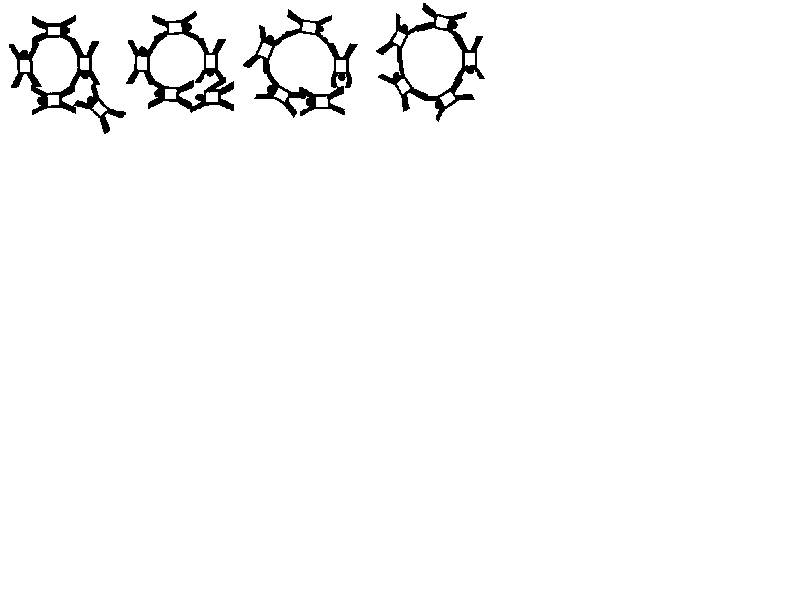
Facing - All jumpers in the maneuver have the same heading:
Flake - The outer portion of a maneuver, similar to a cluster. The jumper(s) hook-up to one person's legs, or, in the case of a donut-flake. to the outside leg of one jumper and the outside hand of another, or, in a cluster-flake. between the legs of two jumpers:

Float - What most maneuvers. especially large ones, do,
Floaters - It's a good idea to use floaters on maneuvers loads: those who will exit the aircraft ahead of the base-pin and enter the formation on the back side - try it, you'll like it.
Fold-Out - A member of a maneuver who will hold on with one hand, or be held in by a leg, and rotate around that grip to either open a slot or rotate into another position in the formation.
In-Out - A star of even-numbered people, half of whom are facing the center and have the commanding grips; half of whom are facing out and are being held in by their legs:

Maneuver - More commonly, a formation, where the jumpers connect in any combination of grips to produce a geometric pattern.
Pod - 2 or 3 jumpers connected to form an additional section on the outside of a maneuver, on the legs of a person in the base formation:

Point - The front man on a wedge or diamond:
Opposed - Members in the formation may be facing each other directly:

Sequential - A series of maneuvers completed on one jump, effected thru grip changes, grip breaks and flying, or both.
Spider - A 5-man base unit for wedges, diamonds, or anything you like:

Star - A round formation or maneuver.
Stairsteps - 2 jumpers hooked-up hand to opposing leg to form an offset cat:

Swoop -Time between your exit and entry to the maneuver.
Tail -The back or slot man on a diamond.

Tip - The comer men on a wedge or hourglass:
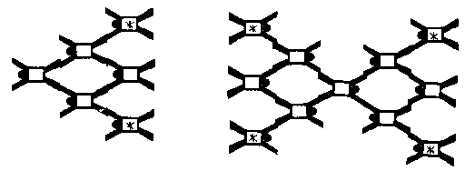
Wedge - 3, 6, 10, 15, 21, 28 ... jumpers forming a triangle or wedge shape:
Wing - The side men on a diamond:

Spotter, May-June 1975
Sequential
pure energy flow
faster than
words can go.
pure action and reaction within the framework of
a startling blue sky
that shocks you with its vividness
and
redefines life
and cold
and colors flashing by
so crisply
so
finally
that all those questions you took up
unanswered into the sky
float down on canopies of softer man-made color.
satisfied and smiling
bursting with energy
wanting to hug the whole of the experience to
you
of sky
and wind and brothers and sisters all sinewy flying
in bubbling
memories
that answer all with knowing
and those who know can
only
answer with a smile.
Pat Works
Practicing "Aware" Sequential Diving.
Freefall relative work requires unique awareness. Relative work also bestows awareness. No ground sport has the added dimension of a vast and undifferentiated void as you find in freefall. In racquetball, the floor and the wall stay put. In basketball, the basket is in a fixed location. However, in freefall there is no such constant reference. There is nothing that is firmly set to take your bearings on.
In RW, the formation you fly with and in is also moving in the sky as you move. It would be like driving a racing car on a road or track that is always moving... or playing tennis with a net that raises, lowers and moves around while you play. That's why relative work requires multi-dimensional flying awareness.
Likewise, sequential relative work encourages and fosters even more dimensions of awareness. Keeping several formations flying together to sequence, rotate and dock with each other means that you must be aware of the flight pattern your formation of two to 10 persons must take to synergize with the others at some imaginary spot in the vast blue void.
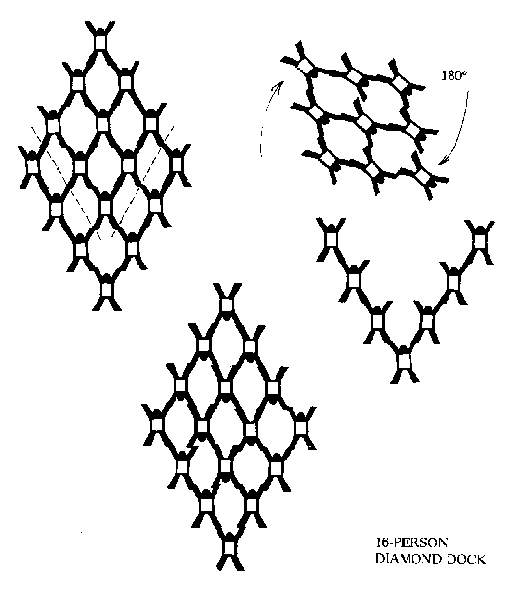
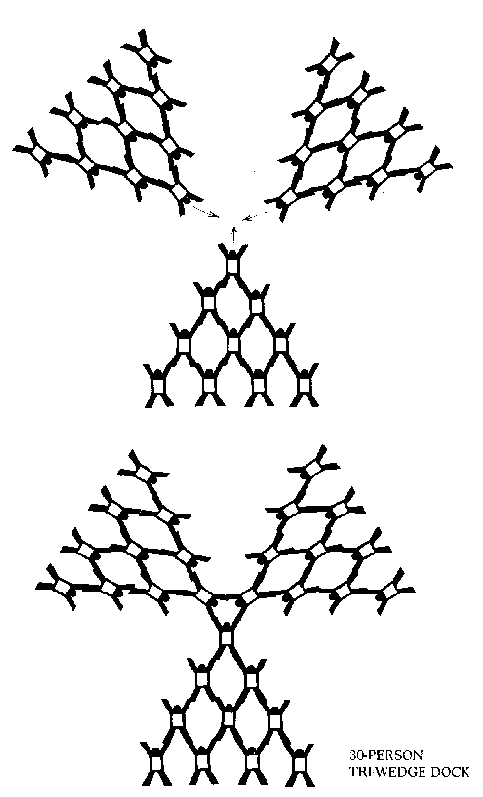
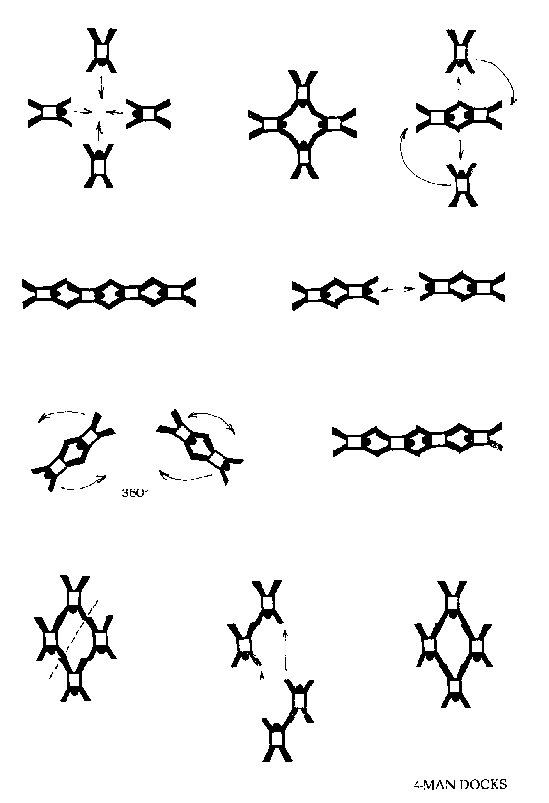
Building awareness starts with being good at no-contact relative work. You must be able to fly yourself precisely and with happy imagination - to park just outside a grip and fingertip dock only when the flow of the dive prompts you to pick up the grip, with a smile.
Awareness is generated by doing basic 2-person and 4-person group flying. Practice pre-stars whenever the flow of the dive allows. Always track the "pieces"... diamonds, cat or wedges ... away as a last sequence. Practice flying as you track. Don't overfly your portion of the piece. People at the rear of a unit control its speed and share buoyancy control (relative fall). People at the point or front direct its turns and also share buoyancy control.
The unit flies like a unit when each member gets grips that do not hinder anyone else's flying.
Good timing is very helpful in successful sequential. Each relative worker should get to his slot at the optimal time. Not half a second too early, nor half a second too late, is right on.
One gets there at the right time by flowing with the dive. A sequenced skydive goes only so fast, like a river. Rivers flow and carry flotsam on their watery backs to highlight the currents. In freefall the uprushing air creates torrents of wind in which we flow. Do this in sequential relative work and you will have better completions, Flowing with the dive permits you to concentrate better on the changing panorama of sky, ground and sun-flashed colors of those who ride on wind.
Awareness and flow start in the airplane. So does the jump. Building a subterminal donut, carrying a 4-man diamond out the door, exiting with a clean 7-man contact which sequences into a 10-man star still tilted on its side in sub-terminal air, flying a 2-man cat out the door all require a good competition line-up and exit. A good exit allows more time to do RW. That is what you're paying for, so do it right from the beginning.
To achieve a really good exit and first formation, you must ground practice both the exit and the formation. The better the ground practice, the better the skydiving. And the better the skydiving, the easier awareness becomes second nature to you.
Pat Works
A Ten-Man Wedge That Floats and Moves With A Purpose
Much inspired by these fantastic flying feats, RWu has proposed the following maneuver and will give a GRAND PRIZE!!! to the first group to execute and photograph it.
All participants should be unflinching. Also, you need a pilot with a sense of humor. It is very likely that this dive will attract the attention of the local press, so have coffee and donuts ready.
We will assume that the coordinate system is attached to the formation. Then we get a steady flow pattern which is identical to the pattern observed in a wind tunnel when the formation is standing still and air is blown past it. From the point of view of a coordinate system attached to the formation, the formation is standing still and the air is blowing past it at terminal velocity. This follows from the Newtonian principle of relativity.
Because of the validity of the Newtonian principle, Bernouilli's law furnishes a very useful first approximation in the computation of forces on the surface of the formation:
Or, P1+1/2pv2/1+pgZ1 = P2+1/2pv2/2+pgZ2
Now, we propose that 28 color-coded divers strap a skateboard to their chests and build a 28-man wedge. The Point and Tip men should have good control. After formation of the 28-man wedge, the entire formation does a normal 180deg. turn-approach to the runway and lands at 117.8 MPH.
Pat Works. RWu. June 1975
"What are we doing?"
"I don't know... Are you having fun?"
"Yeah... "
"That's what we are doing..."
The way you organize a dive depends on why you are doing it. Is it a dive you made up and are looking for people to do it? Or do you have a load of people and you're looking for something to do?
Perhaps it is a demo jump. Or maybe you have some students who want to try their first backins.
You can do a sequence one way for competition and a completely different way for the camera ... and even a third way just for fun. You have to read the mood of the moment. Every situation is unique. The hottest dive in the world is worthless if the people on it don't like it.
Organization is an extremely complex activity. There are no final answers - only tradeoffs and choices.
"The first secret to the inner mysteries of super sequential skydiving is that...
In a neutral frog everybody falls at the same speed. Several jumpsuits? No. One. Adjustable... Because with everybody calibrated we will also know that if you are going last on a 42 man floating razzle dazzle, your ordinary size three wings ain't gonna cut it. That's a size five job. While if you are one of the leaders, you won't wear any wings at all ... And you better be able to track..."
The key is in the transitions. When you let go to move from one to the next, the group stays together. No unwanted vertical separation. The neutral frog is in the center of your maneuverability.
The structural properties of hookups can be analyzed just like bridges and buildings and other physical structures. Visualize the formation failing in steady state equilibrium. What happens when you push it here and pull it there? Notice how the forces propagate and where the weak points are.
You soon see that some disturbances are much more destructive than others. And some formations are much better connected than others.
"Fly into position and then grab hold."
Sometimes it is possible to purposely exert a helpful force when entering a formation, but it is usually better to let it settle on its own.
Thinking about these technical details helps the organizer anticipate problems, estimate probabilities, and determine the distribution of experience, administrative ability, etc.
But there is much more to organizing than that.
The current fascination with geometric patterns is a passing phase, just as stars once were. What is important is all the flying that goes on in between.
That is one reason no-contact work is so much fun - you get to fly the whole jump. You never have to hang on.
With small numbers like eight and four you can make an efficient exit from almost any plane - just ease up slightly from the killer exit required for speed stars. The concept of a base man - a person who goes out first and is the target for the rest of the load - is obsolete. Today we think in terms of leaders - one who is leading the formation at any particular moment.
Always have someone with lots of experience near the door, and in the front of the load.
Falling through clouds is more fun than just about anything ... It is also dangerous, exciting, distracting, exhilarating and against the rules. But rules are only rules and it's the mountains inside those clouds that we must think about. If you are not absolutely certain that the whole load will land in a safe place, then don't lead them out the door.
Think twice about clouds at breakup and opening altitude too. People become unrelated and unrelated people are dangerous...
Cultivate the habit of looking down... People who get below sometimes pull high ... and sometimes chutes open accidentally. Watch for the stray glider passing through... the bad spot and unexpected freefall drift ... and for the altimeters that don't work.
Look at the ground. Study it. Learn it. The first step is to be able to tell whether you are safe or not. The second step is to be able to estimate how much more can be done on this jump. Look at the ground first and then at your altimeter... If you are down where fractions of a second count, it will be obvious. Pull the first ripcord you come to. Don't waste those fractions trying to figure out which one.
Knowing when to breakup is probably the hardest single thing in all of jumping. You have to work at it. It doesn't just come. It is a well developed sense of when to have fun and when to "SAVE YOURSELF!!"
Planned breakups are part of the organization of every dive Everybody is responsible. It is much too important to leave up to anybody other than yourself. If you see it is time, give people a wave-off before you leave. If you are hanging on to somebody, give them a shake. Help each other ... you might need it yourself someday.
"Why do I always have to sit in the cold seat?" In one sense figuring out the exit order is easy. You just choose a suitable development (logical, efficient, artistic, experimental or whatever) for the first part of the dive and divide the load into groups accordingly. The last group to enter the formation will be last out of the plane - and so on down to the initial leaders who will be in the first group. Within each group the people who have the furtherest to go should go first. That is the basic idea.
Floaters are fun and efficient. With multiple planes timing is a factor, but avoiding cross traffic is more important.
A smooth start is half the secret on all these dives. Going through the door is just a detail. The whole load should by flying together before it ever leaves the plane.
ESP ... Ecstasy Sensory Perception ... Do you dive out the door with your ecstasy sensors extended?
Creation, Recreation, Exploration. We are mapping out a whole new area of human experience. To fly is one of man's oldest dreams. Skydivers are the first people in history to have more than a few seconds direct experience. It is freedom and expression and openended -and doing it in a closed framework is unharmonious and wastes a lot of energy.
Skydiving is easy ... Belief is what's hard.
The most difficult organizing is when there are one to three loads available. Some people have more money and some have to leave early and it is hard to make things mesh. With fewer it is easy because you just take everybody in sight. And with more it is easier because there are enough combinations available for everybody to get more or less whatever kind of jumping they want.
Work with your students on the most important four-man maneuvers... the diamond, donut, star, bi-pole. And on the basic skills of coming in forwards, sideways, and backwards ... the main thing about going backwards is looking where you are going. That open star to vee or stairstep with backins is good. Develop their body awareness ... Try flying with your hands closed into fists... or on your helmet. Tell them about airflow. Inspire them with camera jumps.
Skydiving is easy... Inspiration is what's hard. The most important thing about organizing is that we are dealing with human experience. It is not drawings on paper. It is the way people feel when they go up there and skydive.
-Skratch Garrison, excerpted from a letter to a group of Swedish jumpers
10-Man Star Competition-Floaters (1973).
Some competition teams "float" one or two people. The best subterminal RWers are picked for this - they're usually light and lanky. They exit in front of the Base - the idea is to get the Base closer to the last men out of the door for faster times.
I jumped this position at the Zephyrhills meet. It's a neat position in that it's all subterminal and you get to see the exit and most of the star building -it's a heavy visual trip.
Prior to Z-Hills I had zero experience at exiting first and tended to get too far from the Base on the horizontal plane in the beginning. I found that by concentrating on keeping the distance between the Base & I as short as possible, the vertical would handle itself. The base should fall faster than a floater.
If you'd like to try it, I suggest you get your Base-man to show you how to exit. I exited first and was able to enter fourth. The second floater can get in third staying on the back side of the star (away from the aircraft) to lessen traffic.
Dan Poynter floats second and Helen Tyson floats first for the "Pieces of Eight" team. They hit right after the pin is made and have found that "when you do it right" it's a fast 4-man. "It's easy," says Dan.
Whether floating will work for your team probably depends on the relative size/weight ratio of team members, the adaptability of the base-pin to exiting third and fourth, and finally, the concentration of the entire team on RW and not the exit order - (and it don't mean a thing if you don't pull the string!)
Pat Works, RWu, June 1973
More Fun for Your $$$ (1973).
More learnin' for free. Twice the practice and half the cost. Add a little challenge and variety to your 10-man practice with large star sequential relative work.
Ten-man sequential relative work may be a long time comin' in some competition meets but it is lotsa fun for team practice. As a plus, it gives everybody on the team a chance to "fly" their ass off on every jump and not just "do" their assigned slot. A real competition-oriented advantage is the fact that it gives a chance at a second entry and helps teach you to handle a tough problem in any fast star - traffic jams. Importantly, it requires you to think, an area in which we often think our teammates need lotsa help.
How's it work? Simple sounding enough ... go make a ten-man star. OK? Now, instead of waiting for break-off time to come, use whatever altitude you might have le ft to do more relative work.
We'll discuss a sequential formation used by "Jerry Bird's All-Stars," the "James Gang" and the "Get It Together" team from Stormville, N.Y. - the 10-man star, to a line, to two 5-man stars, to another 10-man star. It's very popular and gives everyone on the team a maximum amount of RW flying and competition star-building practice.
First, make a 10-man star; then have the captain or someone drop a grip so you end up with an open 10-man horseshoe. Straighten the horseshoe into a line without wasting any time. This gives everyone a bit of flying experience that'll help if you ever drop a grip in competition. Also it's neat to look down a long line in freefall.
After a jump or two you'll then have time to break the 10-man line in two. You gotta think here. It requires the ability to count five people while in freefall. Immediately close the two 5-man lines into two 5-man stars. This gives excellent practice at closing a star or putting a mess back together. Mainly, it's beautiful to fly two 5-mans 20 feet apart.
Now, as soon as you get your 5-man star closed, one of them will have been designated to either tuck up or flare way out so that one 5-man is 10 to 50 feet below the other. This takes 3 to 5 seconds. Now the guys in the high 5-man split and boogie their ass off, entering the lower 5-man to make the 2-second 10-man. It's simply amazing how fast you'll move if you're gettin' close to breakoff time.
SWOOOOOOP!
Don't expect to be able to accomplish any of the above unless you run through it about 20 times on the ground and each member of your team has the ability to count to five. Ground practice is a lot cheaper than a jump and sorts out all kinds of problems of traffic and timing.
When you start trying it for real, remember it's gonna take about 10 jumps before there appears to be any hope. You're gonna think you're a bunch of turkeys for sure. But nothing that requires skill is easy at first, and a lot of your team members probably have never done much more RW than exit, dive, swoop, flare, shake-&-break, and smile. Ten-man stars are fun, Doing two ten-man stars on one jump and involving your entire mind, body and soul in precision freefall relative work with your mates is something more than fun ... it's exhilarating. (And it's sure to improve your times - this could help you win your next 10-man star meet.)
RWu, March 1973
New Exit Theories (1974).
RWu has had reports of "hard core" competitive 10-man teams who, in their continuing quest for the fastest way to build a star, are experimenting with some unusual techniques. All center around the theory that you "build an exit, not a star."
The "Slots Are For Tots" team, for example, pack themselves carefully in the door and, we understand, exit in such a way that a little grab-ass out the door (in other words, trying to get your hands on somebody immediately) results in an instant three- or four-man, which is then stabled out for entry by the others. There are no assigned slots and no specific floaters on their team - just whoever can get a handhold on whoever else right away.
It must work, as "Slots Are For Tots" took first place (out of 52 teams) at the Z-Hills 10-man Meet. RWu hasn't seen the official meet scores to know whether or not they are consistent in their times, but their fastest was reported to us as 16.7 seconds.
Some teams are experimenting with using lots of floaters -up to four - and are very successful. Several championship teams manage reasonably consistent times with this technique.
RWu, December 1974
The United States Freefall Exhibition Team.
In 1975, B.J. Worth had an idea - a new way to promote skydiving while exploring a whole new world of relative work - the United States Freefall Exhibition Team.
Twenty hand-picked skydivers spent many weekends at Casa Grande, Arizona. Their sequential dives -amazing patterns of lines and forms, emphasized with color-coded jumpsuits and maneuvers, each more complex, more beautiful and more amazing than the last - were recorded on film by freefall photographers Rande Deluca and Ray Cottingham. Those dives have become the movie Wings.
B.J. won support from U.S.P.A. for his team, and the U.S. Freefall Exhibition Team was invited to demonstrate their art at the Relative Work World Meet in Warendorf, Germany. Here is how B.J. explained his purpose for the U.S.F.E.T. in the proposal he presented to U.S.P.A.:
"Our goals are to promote skydiving as a national sport in the eyes of the public; to promote the expansion of skydiving among all members of our sport, and to learn as much as possible about the actual skydiving.
"...We are concentrating on the expansion of progressive relative work through all possibilities of sequential maneuvers in freefall. We feel very sure that sequential maneuvers will play a substantial role in the future of relative work around the world. However, we are in no way trying to exclude round stars from our repertoire of regular weekend jumping, as they are one of the infinite number of maneuvers encompassing the total realm of relative work."
Introduction: Skratch Garrison, SCR-16, was one of the members of the U.S.F.E.T. The following is excerpted from a letter Skratch wrote to Eilif Ness, a member of the international CIP Committee on relative work, prior to the team's demonstration jumps at Warendorf in 1975.
Tuesday, July 15, 1975
"Some of the hottest skydives that have ever been made were made here today, and I'm in a festive mood. You can tell them that I ain't coming." That's Jerry Bird standing outside the Friendship Saloon at Tahlequah at the end of the Nationals telling someone why he isn't at the team captain's meeting now in progress.
Only a couple hours ago, people were standing there looking up at a 25-man diamond. And just before that Captain Hook's team went up and made a 12.8 second star. And before that there was a clean, round 32-man for people to look at. Hot skydives, indeed.
For USFET, the Nationals was many things. A place to learn about demo jumps; a trial run for Europe. At Casa Grande we were jumping for the camera. Now we are doing it for the ground effect. The organization is different. Know where people are sleeping, be on time, walk through the jumps the night before, have alternate plans ... we learn a lot.
It is also a place to meet people, see what they are doing, and turn them on to what we are doing. To exchange technical knowledge about how to do this or that. To wonder where it is all going. To be brothers together once more before we all scatter to the winds and collect somewhere else.
And, of course, it is a chance to get out on the edge one more time. To try things that we have never done or even thought of before. That edge keeps moving outwards, and if you don't move with it, you get left behind. Sometimes, when you go too far, you fall off. We blow a few jumps. But we pull off some hot good skydives, too. Some of them we did for the first time ever as demo jumps.
We have only a few jumps left as a team now. Some practice jumps at the Scrambles in Elsinore, and whatever we do in Europe. Most of the people have 100 to 150 team jumps now, and we are just starting to mesh and fly together. The momentum is there and I think we should take it as far as we can in the jumps we have left. If we blow a third of our jumps, I'll be satisfied.
You are right when you say we "have reached the point where technical proficiency has become a tool to do what your fantasy impels you to." We have only scratched the surface of the technical knowledge we will have ten years from now. But for the first time, the artistry of the jump has become a major factor. That "brick wall"... the limits set by the laws of physics ... is out there all right. Although I don't think we need fear running into it for a while yet. But more importantly, it doesn't matter, because there are no limits to imagination.
We started jumping Thursday at Wagoner, a little town about a half hour from Tahlequah. We ended up spending a lot of time going back and forth between Tahlequah - for the morning and evening demos - and Wagoner - for whatever other jumps we could fit in.
Thursday was the first day of practice, but for me the Nationals started Wednesday night at BJ's parents' house. All these people - most of them strangers only a few months before - and now some of my closest friends. The energy of the team trip is like a whirlwind and the whole house is alive with interconnected conversation and good vibes... "what jumps are we gonna do?... I dunno. Do you think that long layoff has hurt us?... What time do we have to get up in the morning? ... tracking wedges or diamonds apart with smoke would look good at breakup... who stole my beer? ... here's 20 smoke brackets that Dick Gernand made for us ... show the movies... we can't do that because the movements wouldn't show from the ground... what planes are we gonna use? ... yeah, I spent three daze there one night ... I think we ought to jump with other people as much as we can ... so do 1, but first we have to get our own act straightened out... " The team is together for one more boogie - the Nationals - and it's a good feeling.
Oklahoma is hot, humid and windy. The Casa Grande Beech is at Wagoner and we make three practice jumps. A five-point donut-flake. which breaks into five cats that track off, and then the tail pulls off, and then the leaders dump. We also did a diamond dock ... build a nine-diamond, back the small diamond out, do a 360, and redock. And we tried a rotating donuts jump with five-man donuts. The fifth person in each donut added a noticeable amount of inertia.
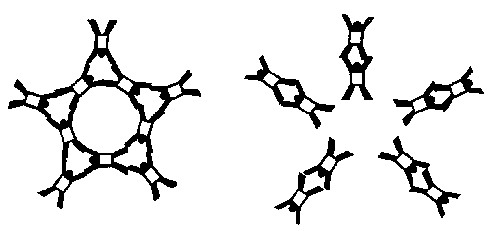
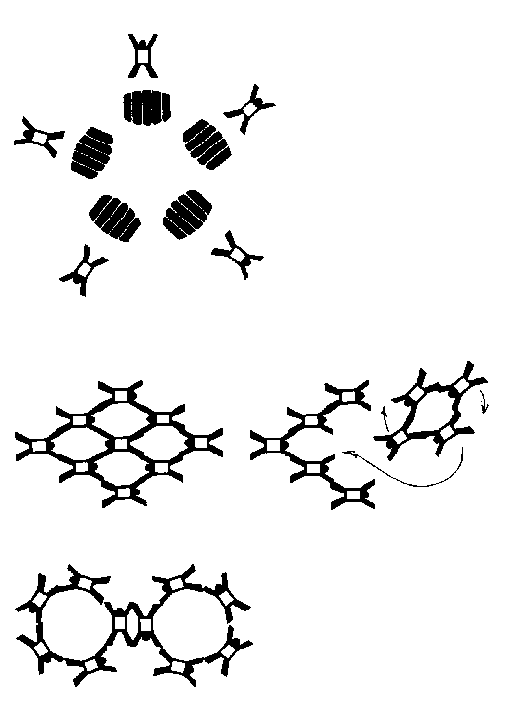
Thursday evening we jumped in at Tahlequah and did the five-point donut-flake to tracking cats dive. It was our first demo at Tahlequah so we did something we were pretty sure we could do. The people on the ground all enjoyed it and we did, too. You can really make those cats move. We were glad to see we hadn't forgotten everything we knew.
Friday we jumped into Wagoner from Tahlequah and built a 15-cluster, broke it into five wedges, and reformed the cluster. On the next jump we started with a 16-diamond. But one person got low so we didn't break into four small diamonds and try to dock them, which was the plan.
Next we tried the quadra-bipolejump but had some trouble with one of the four backwards shots, so we didn't finish that either. We did track the wedges off. Breaking up in wedges and diamonds will probably be in a lot of our jumps in Europe.
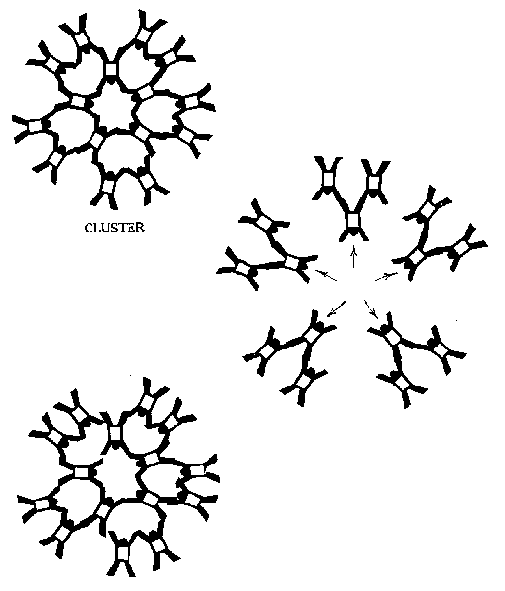
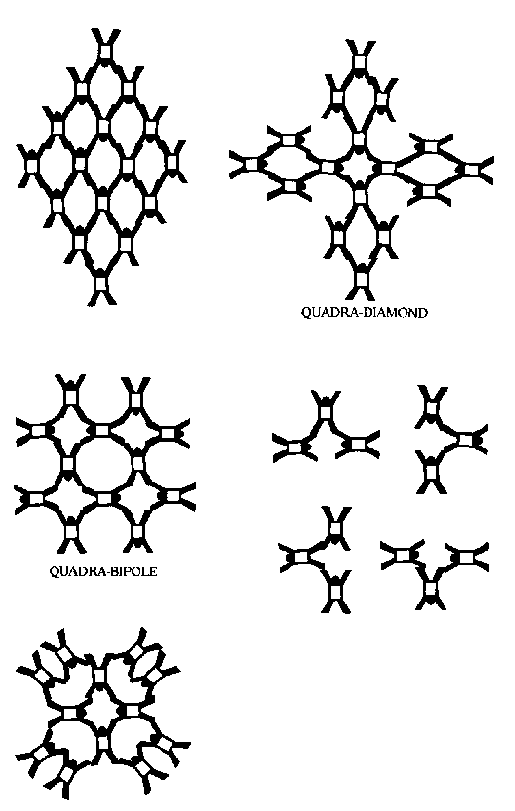
The last jump was the evening demo in Tahlequah. We had a good one planned. It started with a 16-diamond and went from there, but we funneled the diamond right at the end. That was really discouraging. That 16-diamond is one of our best dives. We have done it six or eight times before ... and most of the flying is straight in. It's like Jim Heydom once said: "You take your lumps and keep on truckin'." And that's what we did.
Saturday was the first day of the ten-man competition. We started it off with triple diamonds that break into two diamonds and two people. The diamonds dock and the two individuals come in to make an eagle. Then two reverse wedges track off in opposite directions, leaving a star failing down the middle. The tails pull off the wedges and the pairs fan out and dump while the people in the star open down the middle. We are jumping solid color Starlites, so we can open in color patterns. It still needs a little work.
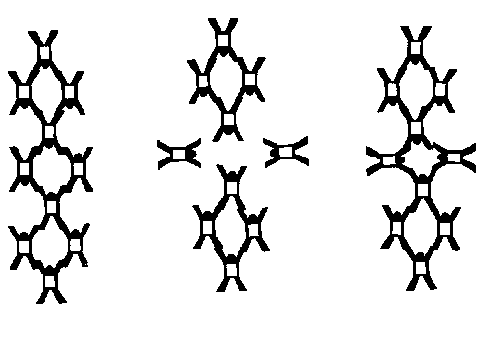
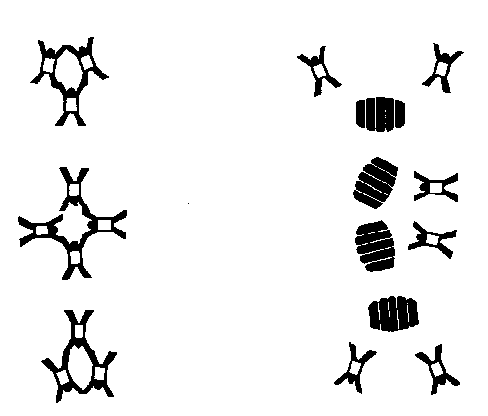
The competition was finished in one day. The whole day felt unreal. We had been jumping and par-tying for two and a half days. The ten-man event was going so fast you could hardly keep up with it, and all of a sudden it was over. Captain Hook won with six stars in the 15's.
We went up for the evening demo and did a 16-diamond with smoke on the comers. We held it down to 5000 ft and then broke into red, yellow, blue and green sub diamonds. The red and yellow ones tracked of f and the blue and green ones docked and then tracked off. The tails pull out of the diamonds and the wedges fan out and dump to leave four columns of canopies ... red, yellow, blue and green. It was perfect! One of the hottest skydives I've ever been on. There would be more of those in the next few days, but I don't think we could have felt any better about that one than we already did.
Sunday morning at 6 o'clock we sleepwalk through our morning demo for the four-man event. I overhear Taylor saying "We didn't get loose last night but we stayed up till 5 o'clock trying." Our morning organization breaks down in a couple places and we get off to a late start and have to cut the jump in half. We did an 11 man hourglass, but ran out of time and one comer didn't get on.
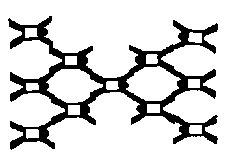
That diamond jump the day before had led to a discussion in the wee hours of the morning about whether the red diamond had out-tracked the yellow one. So we got in the Beech and jumped into Wagoner. The plan was to form the diamonds nose-to-nose and then turn and track side-by-side. We got in such a hurry to get the diamonds formed that we funneled it and ended up tracking a couple pieces and several individuals.
Next we made a jump with half Texas and half USFET people. We built a quadra-diamond and then broke and tried to fly the four diamonds into a 16-diamond. It went pretty well. We got through the quadra-diamond and into the breakup. Then the base diamond sank down a little and slid under the others. It ended up as one diamond with a couple people hanging on and two diamonds flying around trying to get in. We haven't worked out signals for the leader to tell the others where he wants to go yet.
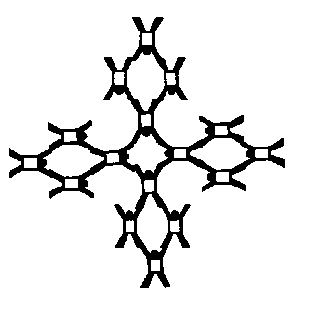
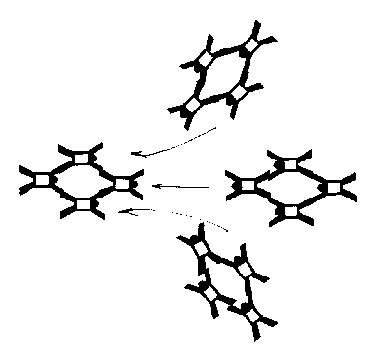
Our next jump was the evening demo at Tahlequah. The plan was an eight point donut-flake. The base started to turn when Matt Farmer's reserve tiedown came loose and his reserve started beating him in the face and knocked his ripcord out and other hassles. Contrary to policy people came in anyway with out letting it settle down. It was a great chase but not much of a demo.
Monday was our last day. It is just as well. We have been on a full-tilt boogie since Wednesday night and people are starting to bum out. Yet Monday saw some of the hottest skydives that have ever been made.
We started it out with the morning demo out of a large door Beech. It is cold at that time of day at 14,000 ft. There are patchy clouds in a thin layer at 8000 ft. We are doing a 9-man diamond dock sequence. They saw us leave the plane and start to form; then we went behind a cloud. We had the diamond clean and stable by 10,000 ft. and we got to just lay there and fly it and watch the clouds come up. It is only one second thick, just a flash and we are out in the open. They say that diamond popping out of the clouds with a smoke on each end looked pretty good from the ground.
We backed the small diamond out and back in. Then BJ pulled out of the center and we flew the hollow diamond for a while. Then the two ends came in and broke wrists and the two people on the sides of the original diamond de-donutized into a nine man star. We ran out of time and one person didn't get de-donutized, but it was a great demo.
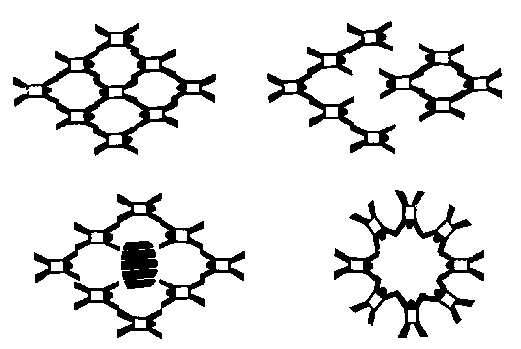
Monday was the day for the ten-man star-BL-snowflake event. The Wings of Orange team almost did the sequence twice from 10,500 ft. which really looked good. Very quickly it was all over and time to try a few record attempts. Bird organized a 32-man load from the first four teams. The first time it built to 31, and the second time to a clean round 32-man. Peter Bottgenbach set up above it and framed the airport with the star. Then Captain Hook went up and smoked out a 12.8 sec star.
Our evening demo was next but these were hard acts to follow. So BJ organized a 25-diamond. You just take a 9-diamond and add four to each side. I'm not sure what to say about a jump like that. I haven't quite taken it all in yet myself. I'm running out of superlatives, but these jumps just boggle my mind.
I don't know where it's all going. I sometimes get the feeling the creation is outrunning its creators.
Skratch Garrison
"You can't make them any rounder than that." That's what I thought when I saw the pictures shot by Rande Deluca last weekend over Casa Grande. Some places make them big - and some do it fast. But at Casa Grande they make them round - and perfect - and smooth. Which is typical of the way they jump here.
Their (Lockheed) Lodestar carries 24 people. On this jump I am in the second group. The plan is to build a diamond, back the small diamond out, and fly it back in -a diamond dock.

The other two groups are doing something equally interesting. But then, somewhere toward the end of the ride up, the guy whose legs I'm sitting between tells me that something is wrong with the plane and we have to get out. We will make one pass for the first group, and the rest of us will go out on the second pass and build a star. So that's what we did - 17 out of 17 - smooth, round, and high. And Rande was right there to take a picture of it.
That was my first jump with most of these people. The next one was two four-man donuts rotating around each other like gears. You start with two diamonds, hooked together like a compressed accordion. When everybody is on, four people "donutize," and the donuts start rotating around each other.

A mobile! Does it fill your head with ideas? It did mine. You know, I've always thought of mobiles in terms of flying unhooked up. Like a jump Clarice and I and Willy Manbo did once where we kept changing positions in a three-man V, repeating the basic pattern: right wing moves forward and the other two fall in behind. So that from the ground it would look like three smoke trails braided together.
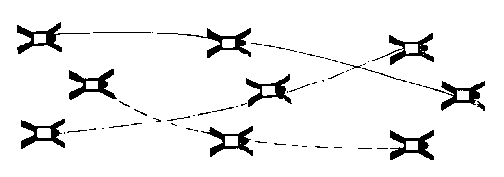
And I had even seen Ray Cottingham's movies of the Seattle people grip-shifting from one incredible hookup to another. But I always considered those discrete, while a mobile was something with continuous flow. So as soon as they showed me this jump I had visions of a string of four or five all going at once, and maybe a big one with a couple little ones going around it, and other Rube Goldberg machines with levers going back and forth and ...
Later that night, out in the parking lot, I was talking to Ron Luginbill about this. He stood there and listened to it all, and then he said "Yeah - and you can do funny stuff, too. Like start with a wedge and someone out in front - in white - and here comes a four-man caterpillar with smoke on the last guy." And Pow! He hits his palm with his fist. I had to laugh. The jump was funny - it was Saturday night - and it felt good to be around such people.
Right! So we are going to do rotating donuts on this jump. "Rotating Donuts!" The language really cracks me up. I can just see one of my early impressions of B.J. (Worth) standing there in his cutoffs with a serious look on his face. "... so on this dive we're gonna start with a frisbee-figbar-flake with red bipoles here, here, and here. Okay? Then the blue jumpsuits will come in and donutize. Only this time we're gonna have double flakes so that you guys in the yellow will have to wait until..." The words start rolling over me like a fog and I stand there thinking, "Jesus -I hope I can remember what color my jumpsuit is."
But it is harder to describe than do. We put on our jumpsuits and go through it from exit to breakup until everybody is clear about what they are supposed to do. Then we go through it a couple more times at the plane with our gear on. Then we go up and do it in the air. And the rotation - so awkward on the ground - is surprisingly smooth.
Actually there is another version of this using in-outs:
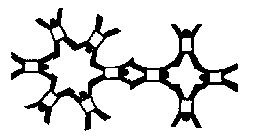
But these people are not just doing it, they are making a movie of it. The movie and the team activity naturally influence what the other people on the drop zone do.
Sunday morning Clarice and I get on a filler load. There are eight of us-with mixed experience. So we tried the simplest of diamond docks. Build them hooked up. Let go (don't push off -just let go - they will separate by themselves). And bring them back together again.

The two points were lightweights with big fluffy jumpsuits - which I want to talk about later - and when they hooked up they spread out and started turning - which made it difficult for the rest of us. I was one of the slot people, and when it was my turn to come in, all I could do was grab some air and let it come up to me. The other slot never got in. No one person at fault -a combination of many things. But the point is -this was a filler load. This is the type of skydive that students around here try to make. These people grow up taking for granted such ideas as assigned positions and diamond docks.
Seattle had called Saturday night to tell us they had made a 2 1-man wedge -an extremely difficult maneuver because it floats so much. They had had a break in their winter rain and fog and had gotten together and done it. There is already some rivalry between Seattle and Casa Grande -as well as a healthy cross-fertilization of people who follow the seasons and oscillate between the two.
So on the last jump Sunday, B.J. decided there were enough people around to try a 24-man sunburst-flake. We made it smooth and high, with only a couple of small vertical warps about halfway through. And Rande got some nice shots of it.
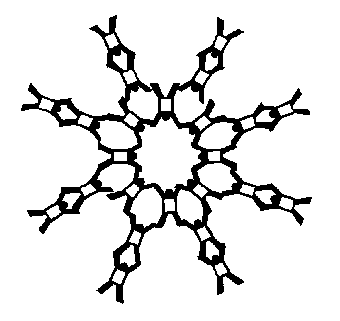
That was a good jump, and I enjoyed it. It makes a nice picture. And it is nice being in a first or in a record of some kind once in a while. But I had more fun on that gear dive. Dynamic jumps, mobiles, flying pieces around, or flying unhooked up are the jumps I like best. They have more possibilities - they are logistically easier-and they are more fun. It's always more fun when you get to fly around on a jump.
They look better in movies, too. Movies, of course, are the best thing that ever happened to skydiving. They do more even than inter-drop zone rivalry to stimulate imaginations and enthusiasm. Bob Buquor at Arvin, Carl Boenish at Elsinore, Rande Deluca and Ray Cottingham at Casa Grande -there is always a cameraman involved when our knowledge of skydiving makes a quantum jump. You can see what really happened, and watch the movies over and over and study them until you can see and understand both the individual actions and the flow of the jump as a whole.
It was our first weekend at Casa Grande. As you might expect, after a weekend like that we were back the next weekend to do it some more.
Seven of us made the first filler load on Saturday. We built a spider, and then the last two people came in and closed it. Nice and clean and high. Then we flew it, and dug it.
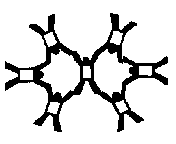
You might be thinking that's pretty hot flying for a bunch of students. But it's not really. For one thing, the filler loads are not pure student loads. They are a mixture - with a wide range of experience. Team members go on them, too; they are one place where people learn.
Beginning students are another story. But if you work with them, it doesn't take that long to get them good enough to start jumping on filler loads. When a person can handle a 30 -when he can pack his chute - and pincheck it - and spot (somewhat) - and dive out the door and feel comfortable doing individual maneuvers - then he is ready to be in the air with other people.
Teach him how to track and stay clear under the canopy. Teach him how to look at the ground and tell whether he is safe or not. Take him out and fly formation (un-hooked up) with him and show him how to move around and side-slide and slow fall and use his legs. Make use of simple jumps such as flying a star unhooked up and passing a baton around, or hookups and backloops to integrate his knowledge - to teach him when as well as how.
Teach him about flying a hookup. That it is being a damper for the tension waves as they pass through you, absorbing the energies and momentums that are trying to distort the hookup, going with the flow of the motion, smoothing things out. It is flying so smooth that everybody could let go at once and nothing would change.
And before you know it he will be showing you something. The only cure for turkeys is prevention; we all know that.
On our last jump Saturday, the plan was to start with a wedge, hold it a few seconds, have the right rear corner pull out of it, and the left rear corner move around to make it a diamond, hold that a few seconds, have the right rear corner pull out of it, and the left rear corner move around to make a diamond, hold that a few seconds, and have the center pull out leaving a hollow diamond with everybody keeping their headings.
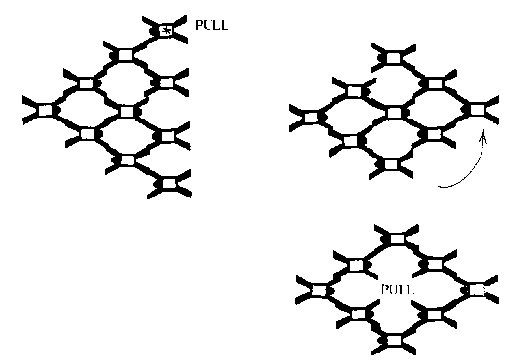
I don't care too much for these pullouts. I guess there is some question in my mind about how well a chute opens in all that turbulence and wash above a hookup. And there is the sudden relative difference in speeds. Everybody is moving along together at 120 mph, and suddenly somebody stops. I've done it before. I was even KAP-3'ed out of a star once at 4,000 feet for a TV commercial that Clarice was on and Bob Sinclair was filming. But I don't like it. We can't ever forget what it is that we are really doing up there.
This jump didn't go as planned anyway. About the time the spider was formed, we saw that the guy marked "low" had gotten under us. We tucked up but it didn't do any good. These hookups that are a solid mass of people really float. Their porosity is too low. The rest of the people came in and we were flying it and tucking up when I looked off to my left and there was Jim Captain - one of the Kansas people and the guy who was supposed to move around to make it a diamond. There was Jim, with this matter-of-fact look on his face, flying his position on the comer like it didn't matter to him if he were hooked up or not. That's where he was supposed to be and that's where he was. I was really impressed. People are getting good when they can fly these hookups with parts missing and never know the difference. And it looked good on film too.
You know, I talk a lot about formation flying - flying unhooked up. That's because it is one of the great unexplored areas of relative work. One of the areas with the greatest potential. And one of the most fun things to do. You get to fly the whole jump. You never have to hang on. It is also the most successful and efficient method we have ever found for showing people how to slow-fall and fast-fall and side-slide and use their legs and do other close-in relative work.
Another thing it would solve is the float problem. It is like a high-porosity hookup. So that instead of everybody striving to get lighter and lighter, everybody is trying to fall the same. Relative work is cooperation - not competition. Cooperate means jointly operate. And you have more control when you are falling faster. Ray (Cottingham) says things are falling so slow that it is getting difficult to hold the camera steady, flying all spread out. And he wears enormous wings on camera jumps.
Another thing it does is open up the possibility of three-dimensional flying. Hookups are inherently two-dimensional, but we skydive in three.
Think of the possibilities! I have. I don't know why it hasn't caught on more than it has. Richard Economy showed it to Clarice one day at Lancaster in April, 1965. And I know that the Army team has been flying their diamonds at demo jumps since 1961 or so. Maybe some of the Casa Grande people will get into it after the movie is finished. I hope so -it would be exciting.
The next jump was unusual. We did it from 10,500 feet out of the Beech. I am in the point of the blue diamond on this one. We get the cut. The floaters climb out. The countdown starts, and we are through the door and into the prop blast.
I keep my eye on the floaters as I turn to watch Bob Taylor, the red point, dropping in on me. Slow and easy - there is no need for an instant pin. In fact a lot of positioning goes on before we hook up and turn on heading with the sun. The wing men, Capain Smooth and Ruben, come in on my knees as the red diamond builds behind Bob. He shakes his head "yes" that the blue diamond has formed, but the red slot man is still a couple feet out so I shake my head "no."
Communication is as preplanned as the rest of the jump. Eye contact, nods, and shakes.
Now the red slot man is in so I nod and we let go. Bank to the left - gently - too much will distort the diamond and cause it to move around. The slot man has a lot of control on turns. The wing men go with the flow. We stop the turn early but overshoot a few degrees anyway. Now we wait, for all the action is behind us.
Finally I get the shake from the wing men that the red diamond has docked, We start our turn to the left and there is the red diamond right beside us, 15 or 20 feet away, making their turn, and it is a beautiful sight. I hate to quit now but the sage brush is coming up and there is no choice. I wish we had gone to 12,500.
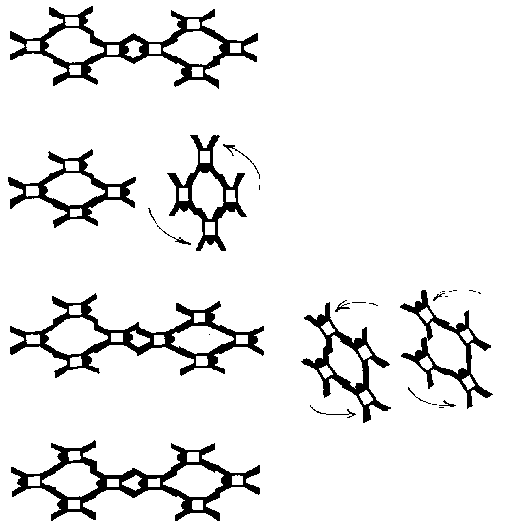
While I'm hanging there under the canopy I think how much fun it would be to fly two diamonds side by side and track with them. (Two weeks later a filler load completed the first half of this - from 10,500. Everybody on the whole drop zone is getting into it.)
The rest of the day is devoted to documenting certain jumps and parts of jumps - like a point of view of Fiegel backing into a slot. For one reason or another the usable footage to date is not what Carl (Boenish) thinks it should be. You know how camera jumps are. The lighting is wrong or the jumpers screw up or the camera doesn't work or something. There is always something.
B.J. is totally into the juggling act necessary to keep all the ingredients organized long enough to make the film. Weekly trips to Los Angeles - 450 miles one way to get the film processed and talk to Carl. Deciding what jumps and who and what's next and coordinating and on and on and on. And the time pressure. The filming must be done by June, because after that Casa Grande is so hot that if you pull above 1,000 feet, your canopy will melt before you hit the ground.
B.J. was in a 12-man one night over Sheridan, Oregon, at a style and accuracy meet. At the time, he was jumping and going to school in Missoula, Montana. Some Seattle people had come down to the meet, and they all got together and made it, nice and clean, and high enough to let it rotate three times while they watched the moon go by. Elsinore had the night record with 16, but that 12-man was so smooth that B.J. was convinced they could add 5 more people and break it. So he contacted Ray Cottingham, who agreed to come up to Snohomish and film it.
While he was there, they naturally made some camera jumps during the day, too. That was in March 1973. The Seattle people were just getting into it. By the Scrambles in September there was a group of 15 or so doing it every Wednesday evening. B.J. went down to the Gulch for the Thanksgiving boogie and came back again in January 1974, when he started jumping with the Allsnoids, a speed-star team, and they would do some kind of maneuver after each star.
After the Chute Out in `74, he started jumping with Jerry Bird's Wings of Orange team. A good place to learn about team organization.
Meanwhile, the movies and things had turned a few people on. Matt Farmer, Jim Baker, Pat Melroy, Jim Captain - all from Kansas - Ron Luginbill - a Texas transplant and one of the first Casa Grande people to get into this - and Rande Deluca, who later got hooked on camera jumping after buying a motor for his Nikon.
While the Allsnoids were doing their thing, these people were going up and working on wedges and diamonds and such. But they had a hard time of it because most people were interested in speed stars. They would go up and make the beginning of something and get two or three people to go along and try to finish it.
They teamed up with four guys from Seattle and entered the Chute Out, and then ignored the competition and did maneuvers instead of stars on their jumps. Interest continued to grow and by the time B.J. got back from Africa. there was a group of 10 or 12 doing it on a regular basis.
Actions and reactions, feedback and momentums. Ray Cottingham naturally had a lot of ideas on movies and camera jumps. B.J. had talked to him about filming some more jumps at Casa Grande for an article he wanted to write. When Ray went to Orange, they talked some more -about solid color jumpsuits and movies and many things. B.J. hadn't written the article yet, but they decided that when he got back from Africa, Ray would go to Casa Grande every three weeks and get some film and see what happened.
In Africa and Europe they showed the movies, and they saw the people's reactions. Somewhere in France it all fell into place. Now is the time, and the way to do it is to form a demonstration team and make a movie and travel around and present it all at the world meet in Germany. He spread the word that there would be some good jumping in Casa Grande this winter. But he kept the team and the movie idea to himself until he could talk to Ray, which he did between November, when he got back, and the Rumbleseat meet (the 1974 edition of the original 10-man star meet held at Taft in 1967).
Ray had just bought a house and couldn't afford to do it by himself, so B.J. started looking around for money, sponsors, whatever he could find. He was over at Carl Boenish's house one night looking for leads and contacts. Ted Webster was there. He and Carl have been working on a movie of their own for a couple years now.
It was okay with Ted if he used the name USFET - United States Freefall Exhibition Team, the name of the team that went to Bled, Yugoslavia with such good results. And it turned out that Carl was willing to furnish the film and produce the movie. Wham! Back to Casa Grande the next day - a team meeting - start with 16 people - leave two slots open for expansion - and Rande and Ray, the cameramen, make 20. They got solid color jumpsuits from Joe Garcia and started jumping on January 11, 1975.
B.J. told us about all this when he stopped by our place one day in the first part of February on one of his weekly trips to L.A. Remember how much fun it was when we were first learning, and there was something new on every jump? Well, it is like that over there now. It has been a long time since I have been around people who can point out each other's mistakes and be thanked for it. And I dig it. The movie atmosphere is unmistakable. Counting the drive by Elsinore to pick up Max Kelly, it is 500 miles - one way - to the Grimy Gulch. But this is one of the key periods in the evolution of relative work, and I wouldn't miss it for anything.
What better communication between skydivers than movies? Let's have a running competition between drop zones all over the world - by movie - one big continuous meet with subgatherings like the Scrambles to revive the spirit. And we'll see who can boggle each other's minds with incredible flying.
Making movies creates an atmosphere that is as important as the movies themselves. And we'll have demo gatherings that start where today's meets end ... with the fun jumping. Completely freeform - no rules. Hinckley started it a long time ago at Zephyrhills when they did the first 10-star - backloop - 10-star. Those guys had a lot of class; they helped set the tone of the Z'hills meet.
Another place jumping is going is formation flying... flying pieces around, flying unhooked up, mobiles, dynamic jumps. just building things is okay, but flying them around and doing things with them is more fun and has more possibilities. Pieces that move around and change and exchange members...
Another place is three-dimensional work. Open your movie with six guys in a three-dimensional diamond - at 15,000 feet - going by some nice looking cumulus clouds -with the sun glinting off the convex mirrors people are wearing so they can see what is happening above them -making nice flashes in your star filter ... and just when the audience has kicked back to groove on this, it starts to move and flow, like a three-dimensional dance...
I started this last Sunday on the way home, but we have been back over there again since then ...
Yesterday was weathered out; today was perfect. On the first jump we started with a cluster made of three wedges - red, white and blue.
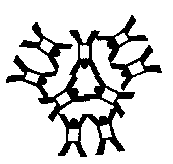
The plan was to build the cluster, separate into three wedges, do 360's, reform the cluster, hold it, then do 180's with the wedges and track them off for breakup. We took too long building the cluster and only got two of the wedges back together.
But the interesting thing about this jump is the planned breakup. Some of these jumps, especially the big ones, can get a little crowded at opening time. That's one nice thing about a star - when you do a 180 and track, you don't have two or three layers of people out in front of you. Eco, the guy who showed us the formation flying, said, "I just dive down to a grand or 600 feet and pull there." And he did. But that was a long time ago. Bob Federman once said, "Going low is a rush, but it's not practical." Succinct, and accurate.
Planned breakups are the obvious answer. They fit right in with this type of jumping. And they look good in movies and on demo jumps too. Like in Europe. The team is going. The meet director has OK'ed it. There are always a few problems - like money - but some version of the current team will be at the World Meet. Their main concern in Germany is that there be' no interference with the meet. That's understandable. They can't guarantee any jumps -during the meet anyway. But I'm optimistic.
There is one jump that I want to tell you about - the way I saw it, if I can. We are on jump run in the Lodestar. Schafer gives the cut and three floaters - red and blue - climb out. The fourth is coiled low in the door. Dugan, the red point, is high in the door. I am hair-triggered up against his backpack and Schafer, the blue point is behind me. Ron Luginbill, the yellow point, is next with the remaining wing and slot people behind him as we compact ourselves into the pre-exit mass which, hopefully, will fire out the door with good flow and no gaps. The wing-mounted camera tells the whole story, and if you don't look sharp, it really stands out.
Dugan starts the (accelerated) count, using his fingers for the floaters outside the plane. "Ready! Ready! Threetwoone-GO!" Through the door and into the prop blast, flying formation off of Dugan's left wing as he goes straight out and then makes a swooping 180 left to take up his heading and position.
I am the left wing of the red diamond and I see Robin, one of the floaters on this jump and our right wing, is already flying loose formation on Dugan, waiting for me to move in. There are blue jumpsuits converging out in front and yellow ones off to my left in my peripheral vision, but mostly I am focused on Dugan... to hook up with the jumpsuit on the inside of his left knee, on his heading, without moving him even a tiny bit. Smooth - easy - fingertip relative work - fly into position and then grab hold - whoops! - last minute bobble - Aar-rgghhh! - God dammit - unsmooth - unsmooth - and on film, too. But it doesn't do any damage and Robin is in a second later.
Glance at the blue diamond forming out in front and see that it has floated up about 30 degrees. Flash a look at the yellow diamond off to the left which looks about the same altitude and a little further out. Dig in with my right knee and concentrate on staying on heading with Dugan. Moments later Zinger, the red slot man, comes in. Then I really start to over-amp as I watch the blue diamond settle in - four guys - four times the momentum - all working together, and we dock with only a small warp. Look across at Tony DeRosa in the blue diamond.
Then I am completely blown away as the yellow diamond comes swooping in, like a big manta ray, so clean and nice. There is Hod, their right wing, only a couple feet away. He looks at me with about 6 yards of teeth-to-teeth looking in all directions at once -and luxuriating in that moment when you can read everybody's thoughts on the whole jump. Off to the right I spot Rande about 60 degrees up, shooting away. Then he drops down and shoots from underneath. We still have a few seconds left, so I lie there and try to take it all in. At 4,000 feet the diamonds do 180 right turns and track off.
I think that was a first, a record. I don't know. I don't care. I couldn't possibly feel any better about the jump than I already do. Anyway, B.J. is keeping a record of every jump - who went where and what happened. I'm just having fun making skydives with a very professional group of people -The United States Freefall Exhibition Team. We were talking about it all one night after studying the films and B.J. said, "It's gonna spread like wildfire."
I think he is right. It sure gives me an airgasm.
Skratch Garrison. SCR-16. Parachutist. July 1975.
If you dug Skratch's "Patterns In The Sky" thing (July Parachutist), then here's some more to whet your whistle. Skratch is a member of the U.S. Freefall Exhibition Team. He drove from Los Angeles to Casa Grande, Arizona to practice with the team every weekend throughout the spring. "When I think of the implications of what we're doing," he says, "it gets so interesting and complicated that I can't even keep track of it. Any size load and anything you can figure out how to do ... it's a healthy development. The natural evolution from competition to cooperation. Speed stars taught us about exits. Now we have time to learn something about skydiving. That is exciting."
Here's Skratch's description of a Venus Flytrap: "It starts as a six-man star flying in front of a four-man diamond. The star opens into a line - the line and the diamond fly together - the line closes on the wings of the diamond -and the point of the diamond pulls out of it. What an interesting jump!"
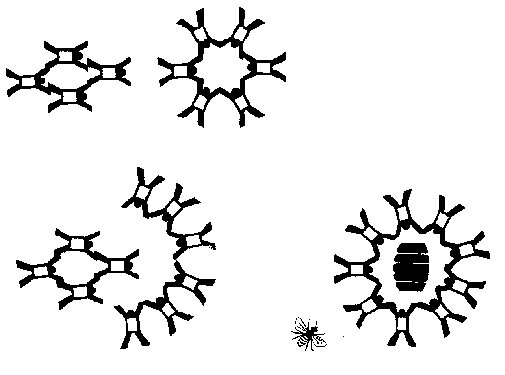
Skratch describes a quadra-bipole: "It starts as a four point donut-flake. The next four can come in like the first flakes did and make it a donut-double-flake. Or they can fly into the same slot backwards and form a quadra-bipole. It really changes the character of the jump. On all of these jumps each group or wave is supposed to fly in as a unit - all at the same time. It looks good when we do it right ...
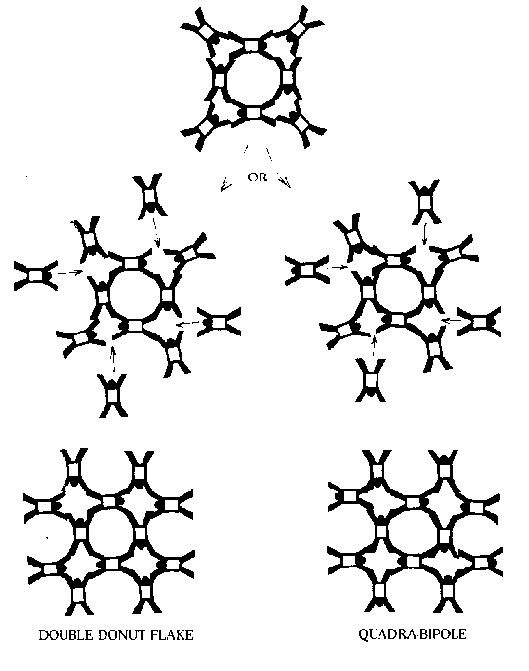
"Take a size 8. red donut-flake some Sunday afternoon and have four people in yellow fly in backwards to form a quadra-bipole...
"Schafer gives the cut. Rande backs out and swings to the rear, being careful not to bump his camera. Amazing. Constantly amazing. Camera jumpers are a breed apart from us ordinary skydivers.
"Grab ahold and start oozing around the door frame to the front. Urk! Strain! Its really windy out here, being forward floater. Zinger squeezes out between us. Twist down, looking tinder his left armpit-Melroy's face, counting: three-two-one-GO!! It's a neat position, forward floater, almost like coming from another airplane. The base dropping away and the rest of the load stringing zip in a perfect curve leading right to the door.
"Start side-sliding down, and to the right-relativizing with the center of momentum of the initial diamond that is already starting to form. Settling in as they donutize, fine turning with the flow of the donut. It's a good swoop -everything feels right. Grab the jumpsuit right where it's flapping on Melroy's left knee, right hand reaching for Zinger's left. Look zip to see the happy, bearded smile. TAYLOR?!?!??? YAAGGGHHH!!!! I've spaced out and flaked the wrong slot. Let go like a hot potato and track-slide-hurry around to the right one! The jump continues, but we run out of time and don't finish it.
"Every time we try it we learn a little more. Yesterday - through the quadra-bipole into the breakup-through the grip switch into wedges -coming out of the turn and catch sight of the other three - and that's when you know. Off to the left ... a little low - out in front ... even with us - to the right ... a little low. The electric realization! It's there - we have the altitude - we can do it - everybody knows it. Everything got very smooth and synched and clear - even the air felt smooth - and the jump started happening at 200 frames per second. The wedges flowed together - nearly a simultaneous dock - the last cluster grip closed on the other side - WE DID IT!!! You can yell much louder than you can type. They heard its on the ground.
"That's about as closely synched with 11 other people as I have ever been. We are clearly skydiving at the edge of our ability, and it is wonderful. "
Skratch Garrison. RWu. October 1975
RW Game, by Tony DeRosa of Arizona:
Relay Relative Work
* = a passable item
#1 has passable item on exit.
#2 takes passable item from #1 in freefall & faces out (right) from plane heading.
#3 coming from outside takes passable item from #2 & is facing left from plane heading.
#4 coming from inside takes passable item from #3 & is facing right from plane heading.
#1 pins #4 from outside, #2 takes near side; #3 around back.
"Optional, for hot dogs only" says Tony. "Do a backloop when you get the item (#1 does his backloop out of the plane). Do a 360deg. turn after you give it away, but still make a 4-man star by 2500 ft. Keep the deck in Sight
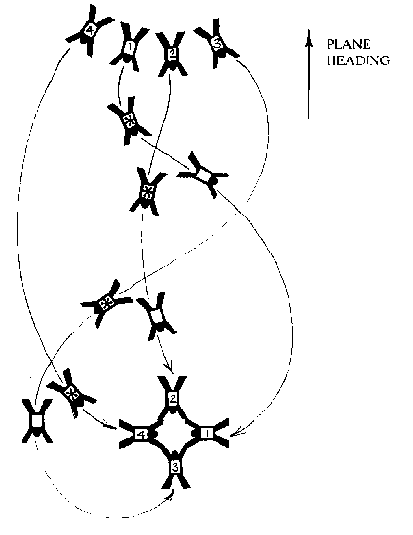
Double Diamond Dock, performed by jumpers from Seattle, Kansas and Arizona over Casa Grande recently. As described by Matt Farmer, "The diamonds flew about 30 ft. to a clean double dock ...
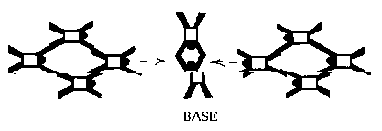
"Other-than-star-flying is not difficult, but there are some new flying positions and, of course, some new ideas. The symbolism used to draw out the dives is sometimes confusing but if you get four people standing around trying to hold on to each other like the drawing shows, it becomes a lot easier to see.
"Formations have really turned me back to where RW was at when we were all learning. On a formation jump the question is not how fast can we make this happen, but can I and all these other people pull it off, make it happen at all. Formations also make exit orders less important-with more happening up there, the base man might at some time during the jump be doing a lot of flying, and the last man can end up base.
"Maneuvers foster group consciousness -you have to know your place and everyone else's. On most maneuvers, your slot isn't even there until the people in front of you are in. In formations that are built by flying units together (as in the double dock), you must do RW as a group - and that's a unique, interpersonal experience at least!," says Matt.
RWu. June 1974
Sequential RW as Done by the Seattle-area People (1973).
"It's more fun than all the jumps you have to make to be good at 10-man speed stars," says Craig Fronk of the "Clear Eye Express" 10-man team and the 4-man team of Bunky-Rocky-Herman-Frank which won the RWuCombined Championship RW Trophy at the `73 Nationals.
According to Craig, sequential requires more from all the people on the formation team. Mistakes on sequential make for a crash formation. No one can be late or get low because there are other people waiting for him to fill his position. Every man is assigned a particular slot and plays are run as in football. They use a playbook created by team member Ken (Gruber) Gorman.
"The 'plays' our formation team fly are hard to visualize, even on paper. We have to do a lot of ground practice. We start each play small and build up. A lot of the stuff that seems complex is simply constructed from smaller segments. We practice these 4-man segments to learn the basics of flying backward, for example, and how to switch grips. Grip switching gives symmetry in the sequence from maneuver to maneuver. The `switch signal' system is key. The last man in shakes and it telegraphs up front. The key men drop or switch grips and the flyers run their pattern until the next maneuver is completed. We've found that loads of either 4, 10 or 16 give the best plays and sequence."
The "Clear Eye Express" is a competition 10-man team. "We do speed stars because that's the recognized form of large-star competitions explains Craig. (They placed 5th at the '73 Nationals). "We started out doing 4-man RW, then we had two 4-man teams. We added two and did 10-man RW. Then we just kept on jumping. We try to train people to do RW because it takes a lot of good flyers for our sequential. The only way to get them is to help them learn."
When they want to do a 16-man play they simply call everyone from all over the NW Conference. "It helps keep us together," says Craig. "It's probably the best warm-up jumping you can do for a 20-man attempt, too. It puts everyone's head in the right place for working together and flying properly. It eases the big-star jitters and generally mellows things out into lots of grins.
"Try it, you'll like it."
RWu, December 1973
